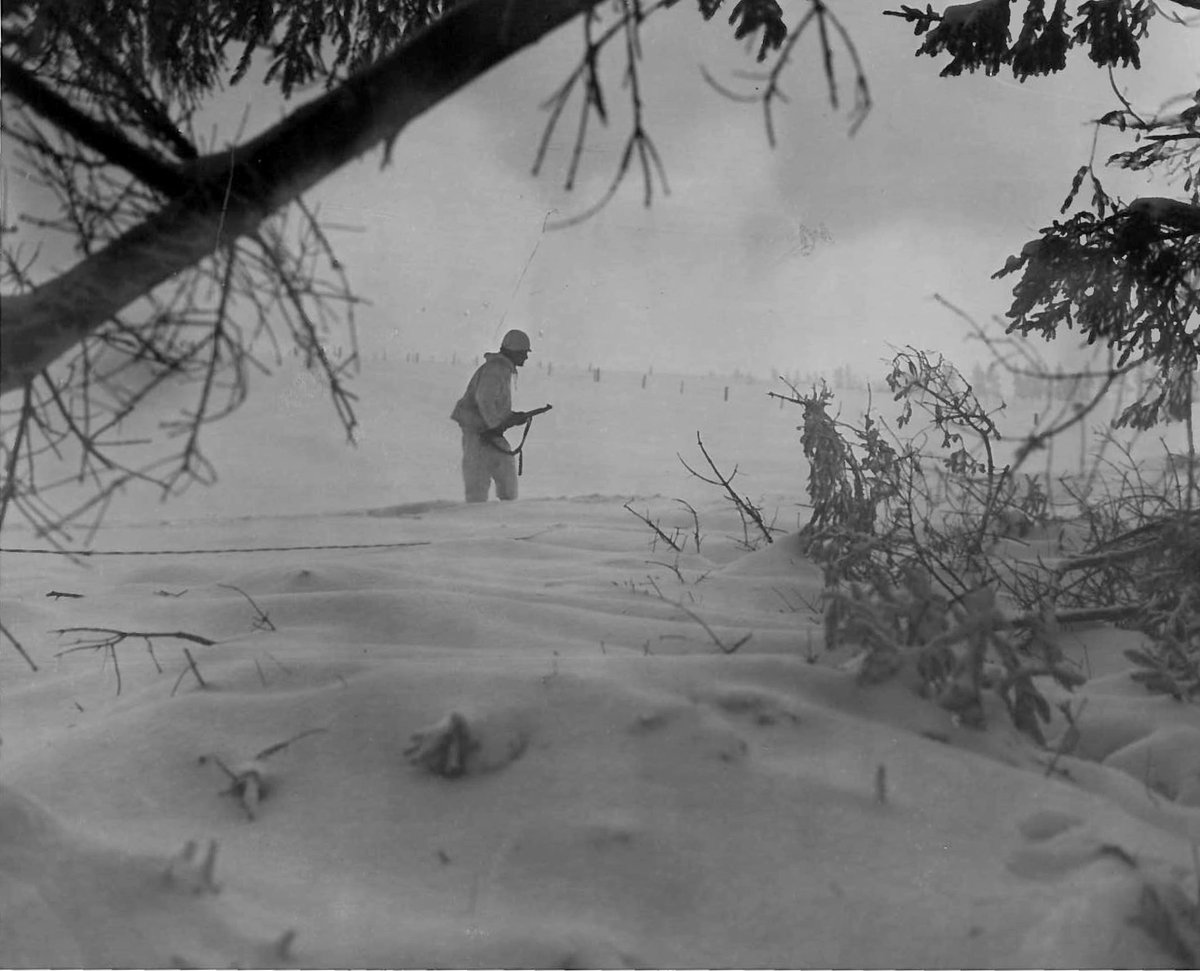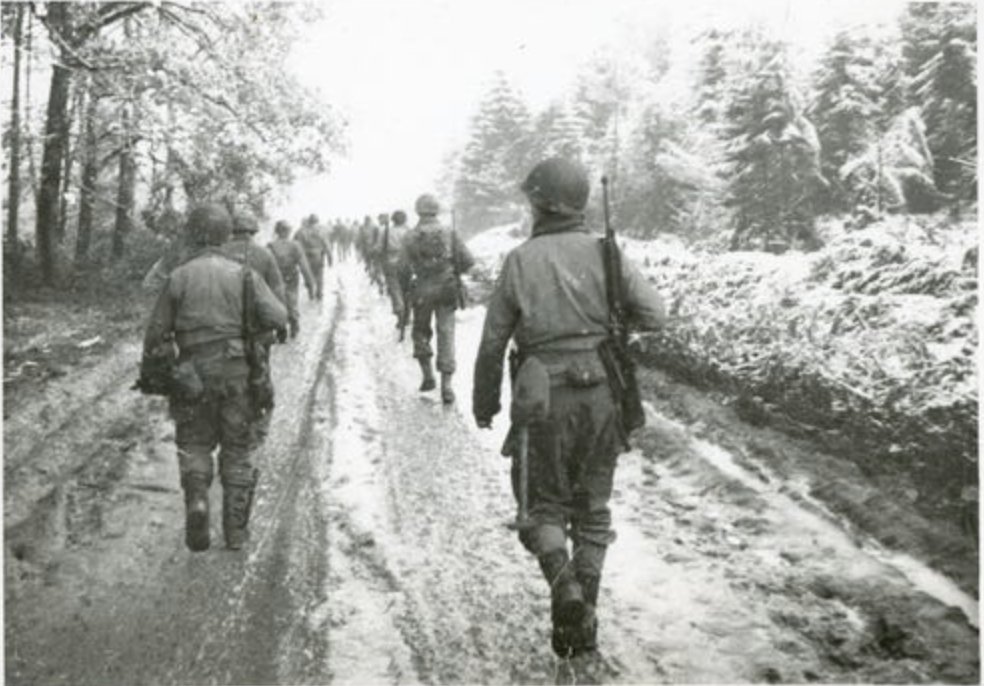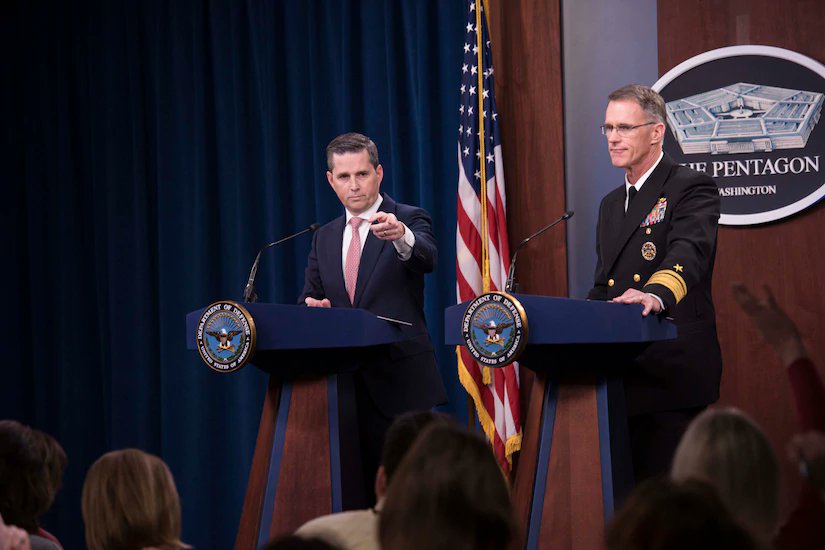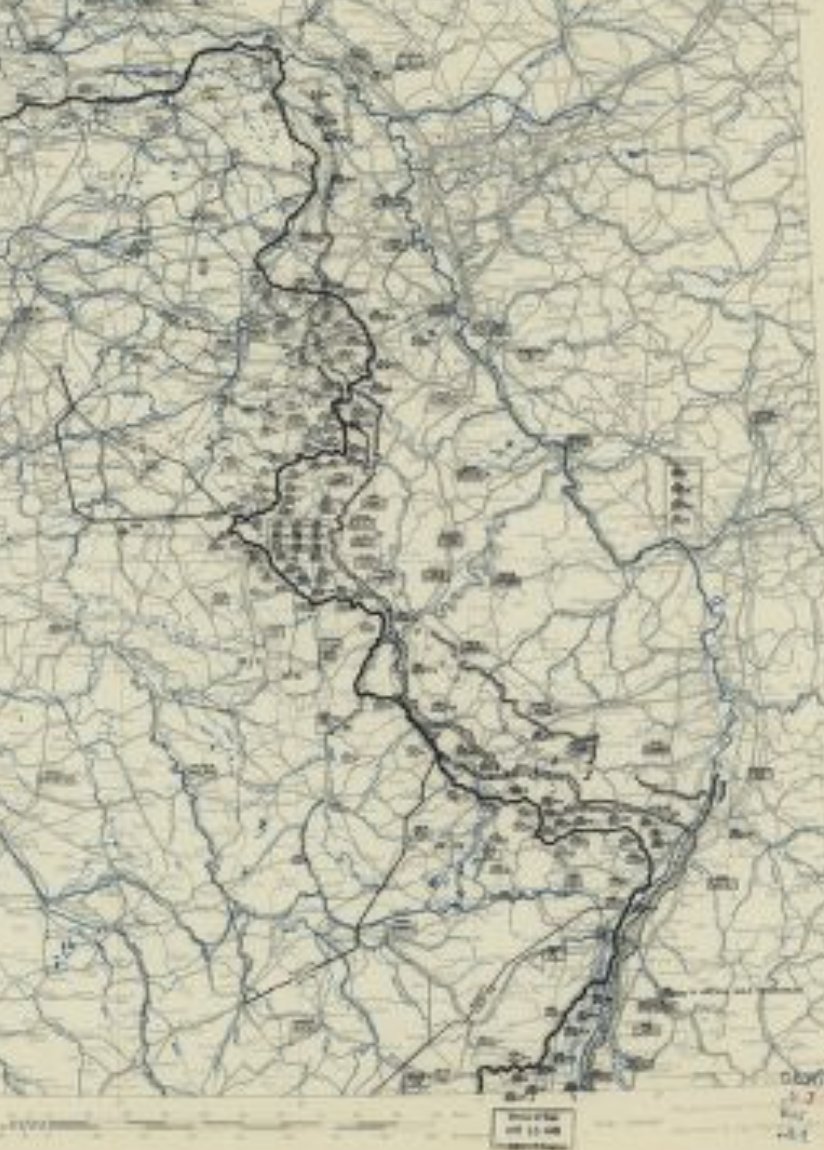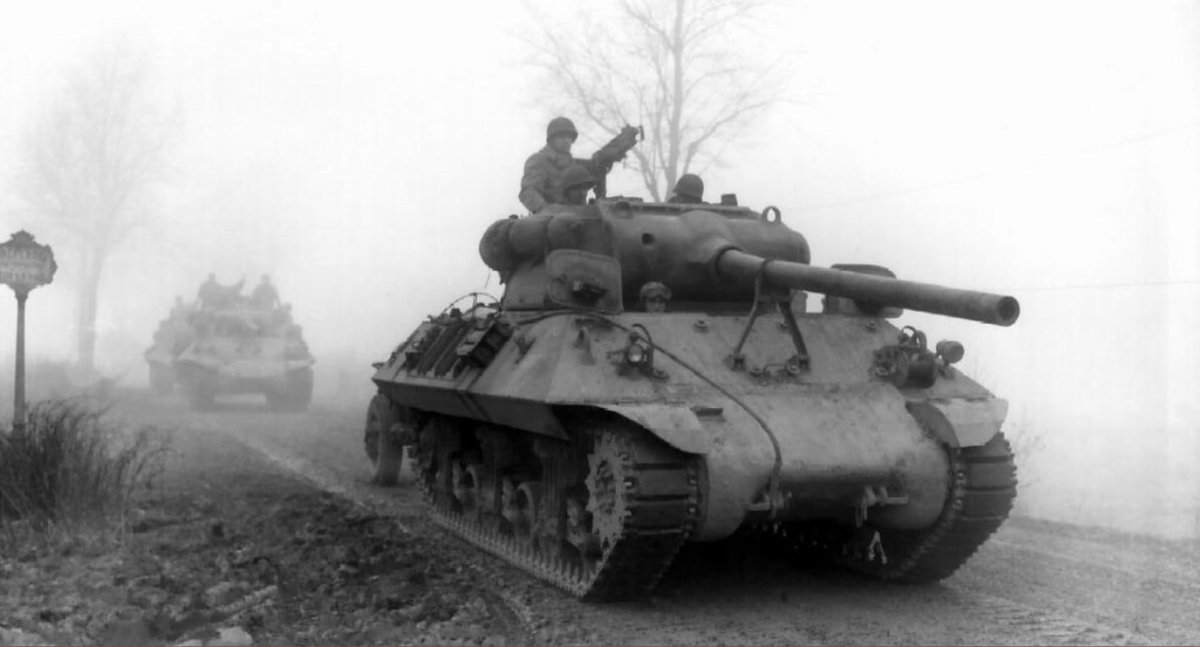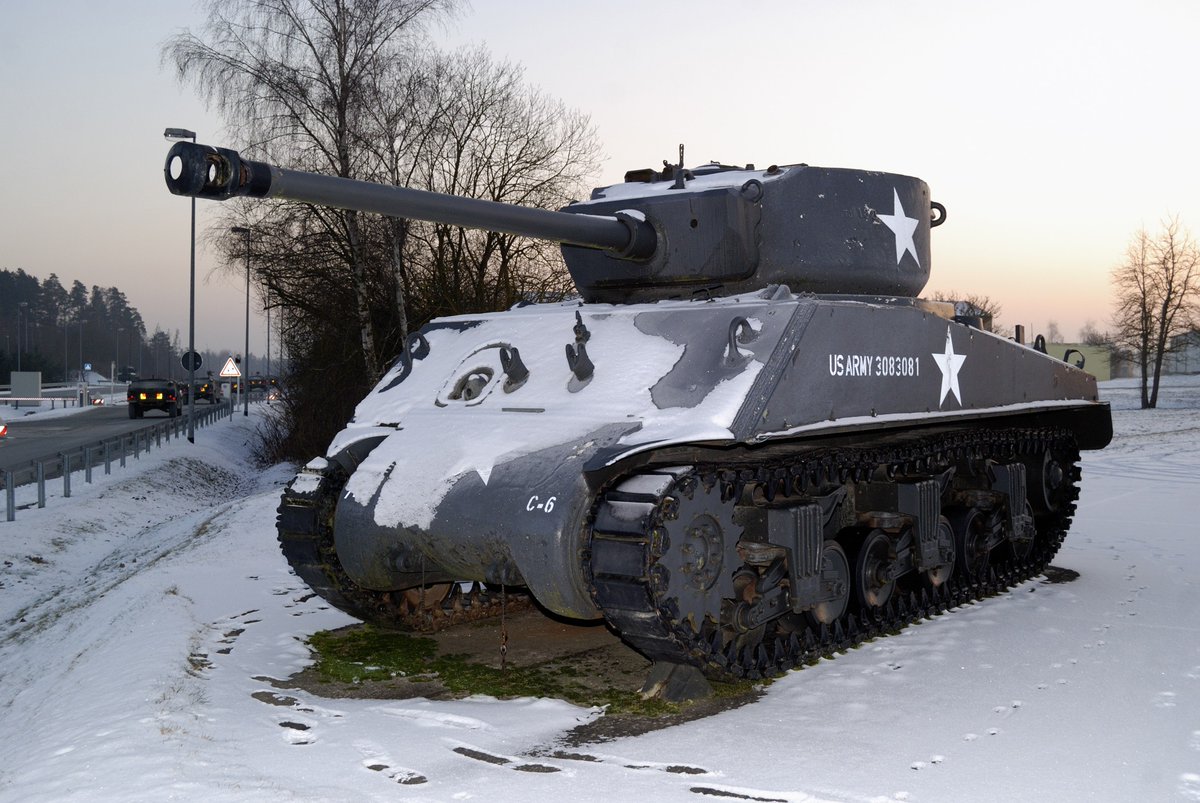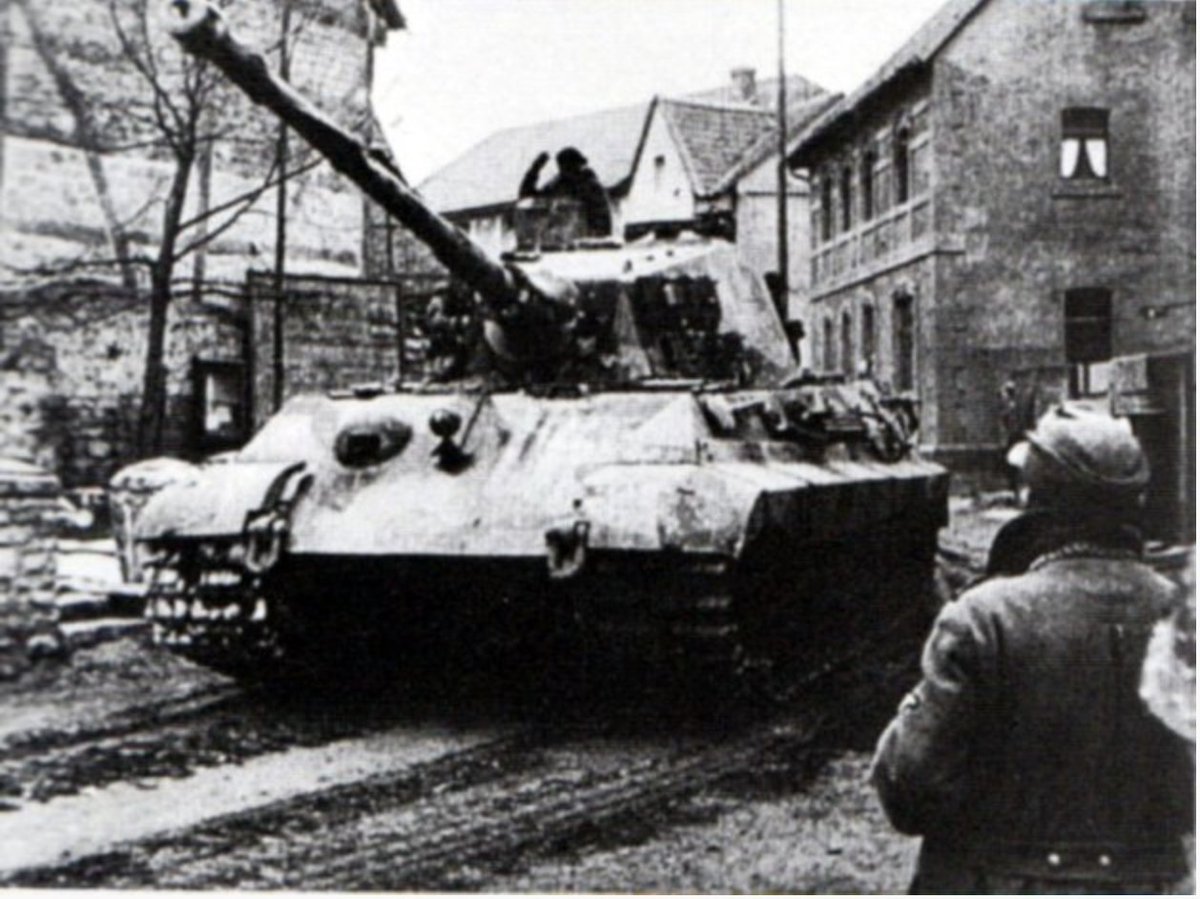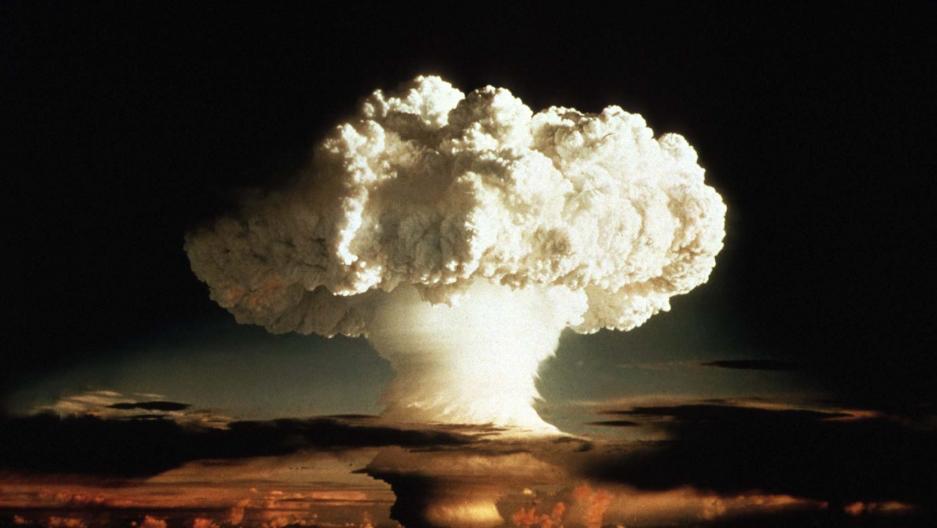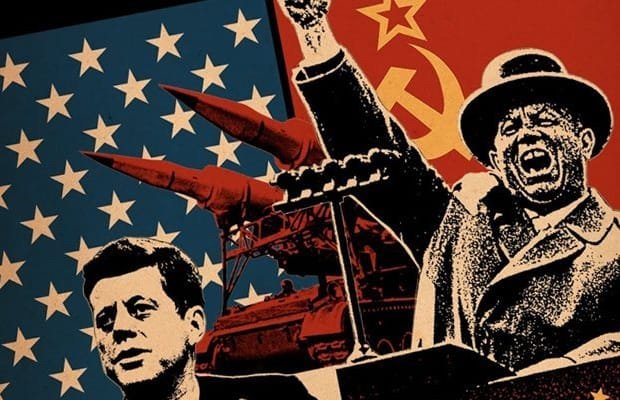
[1 of 7]
Battle of the Bulge, Day 31:
Morning Jan 16, 1945, Patton's 3rd Army finally pulls into Houffalize after a 13-day push NE from Bastogne (slowed by ice, bad roads, and German artillery).
We had absolutely pounded the Belgian town from the air the two preceding days.
Battle of the Bulge, Day 31:
Morning Jan 16, 1945, Patton's 3rd Army finally pulls into Houffalize after a 13-day push NE from Bastogne (slowed by ice, bad roads, and German artillery).
We had absolutely pounded the Belgian town from the air the two preceding days.

[2 of 7]
Patton wrote that Houffalize was "completely removed" by the thousands of tons of Allied bombs targeting the Germans in recent days.
Patton wrote that Houffalize was "completely removed" by the thousands of tons of Allied bombs targeting the Germans in recent days.
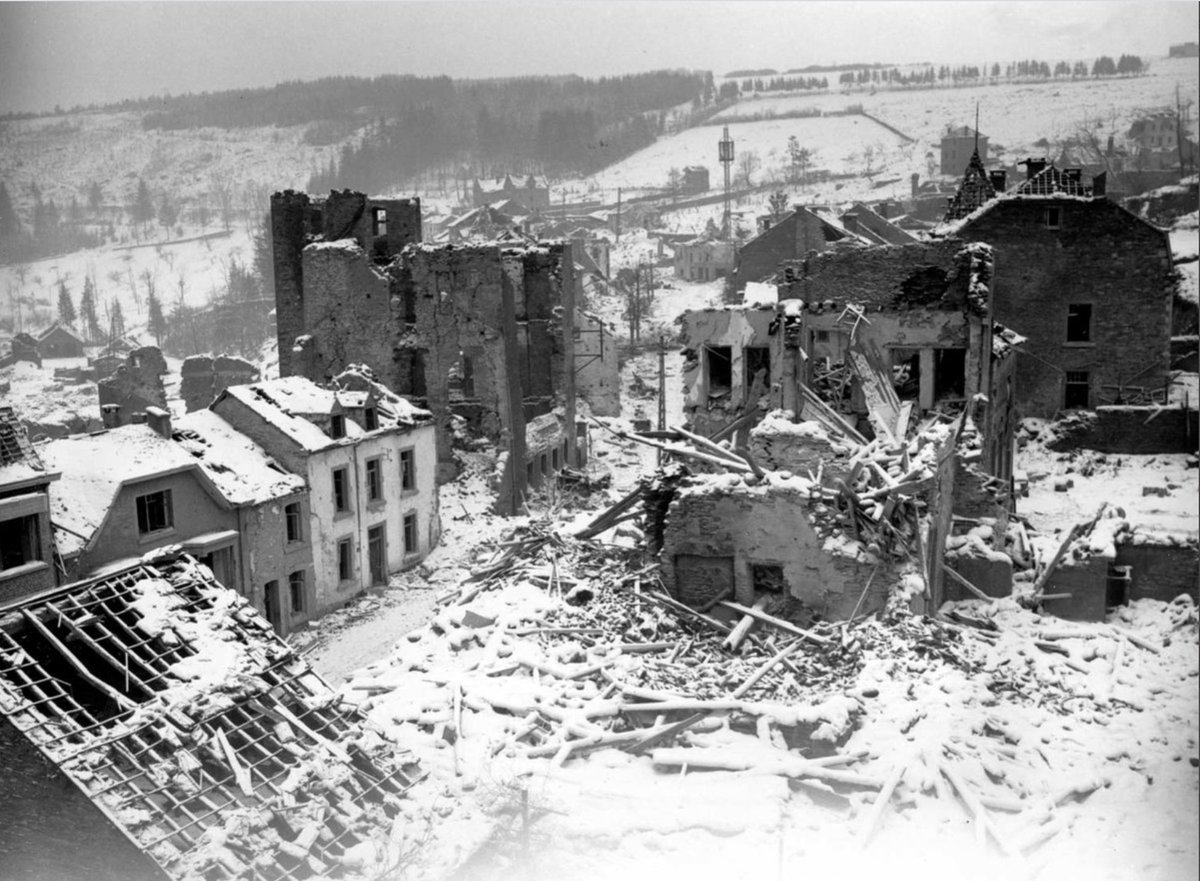
[3 of 7]
Soldiers of the 44th Inf Division found & inspected this German Flammpanzer 38 (a Jagdpanzer 38 modified with a flamethrower in place of the main gun) abandoned by German forces outside Houffalize
[apparently the Nazis didn't live the "death before dismount" motto"]
Soldiers of the 44th Inf Division found & inspected this German Flammpanzer 38 (a Jagdpanzer 38 modified with a flamethrower in place of the main gun) abandoned by German forces outside Houffalize
[apparently the Nazis didn't live the "death before dismount" motto"]

[4 of 7]
Houffalize was a market town, occupied by Panzer forces since Dec 20th & a strategically located crossroads.
It was effectively and tragically martyred for the liberation of the Ardennes by 1,000 tons of Allied bombs.
Houffalize was a market town, occupied by Panzer forces since Dec 20th & a strategically located crossroads.
It was effectively and tragically martyred for the liberation of the Ardennes by 1,000 tons of Allied bombs.

[5 of 7]
Virtually no place was safe during the bombings. Historian Dr. William Hitchock determined that nearly all of the ~200 civilians killed in Houffalize during BoB died due to Allied bombs.
We must not overlook the terrible toll this war took on the Belgian citizenry.
Virtually no place was safe during the bombings. Historian Dr. William Hitchock determined that nearly all of the ~200 civilians killed in Houffalize during BoB died due to Allied bombs.
We must not overlook the terrible toll this war took on the Belgian citizenry.

[6 of 7]
While the bombing of Houffalize resulted in tragedy, the American Soldier treated the people of Belgium with the greatest dignity and compassion throughout the Battle of the Bulge.
Our GIs took great risks to help protect & evacuate Belgian citizens when possible.
While the bombing of Houffalize resulted in tragedy, the American Soldier treated the people of Belgium with the greatest dignity and compassion throughout the Battle of the Bulge.
Our GIs took great risks to help protect & evacuate Belgian citizens when possible.

[END]
It took more than a decade to fully rebuild Houffalize.
Into the early 1950s, death reached out from the ground itself, as the entire town was seeded with hundreds of thousands of unexploded munitions.
Today, the town has a captured Panzerkampfwagen V tank on display.
It took more than a decade to fully rebuild Houffalize.
Into the early 1950s, death reached out from the ground itself, as the entire town was seeded with hundreds of thousands of unexploded munitions.
Today, the town has a captured Panzerkampfwagen V tank on display.

• • •
Missing some Tweet in this thread? You can try to
force a refresh

